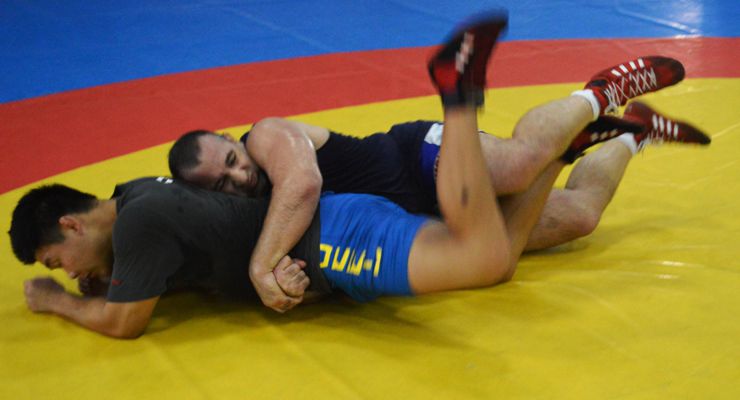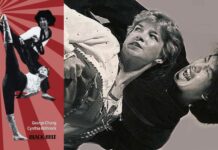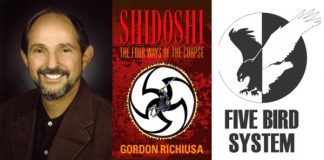 Since the birth of the human race, people have wrestled. Over the millennia, wrestling has developed from a base form of animalistic fighting to an Olympic and professional sport. In China ancient records show that the various regions and ethnic groups had their own wrestling styles, including Mongolian, North Korean, Yizu, Uyghur, Han, Manchurian and others. Through meetings between these peoples, techniques were shared and eventually a national Chinese style of wrestling developed. While the name for this art has changed over the centuries, today it is called guo jiao (国跤national wrestling) or zhong guo jiao (中国跤C hinese wrestling), zhong guo chuan tong shuai jiao (中国传统摔跤 Chinese traditional wrestling), or simply shuai jiao (摔跤 wrestling).
Since the birth of the human race, people have wrestled. Over the millennia, wrestling has developed from a base form of animalistic fighting to an Olympic and professional sport. In China ancient records show that the various regions and ethnic groups had their own wrestling styles, including Mongolian, North Korean, Yizu, Uyghur, Han, Manchurian and others. Through meetings between these peoples, techniques were shared and eventually a national Chinese style of wrestling developed. While the name for this art has changed over the centuries, today it is called guo jiao (国跤national wrestling) or zhong guo jiao (中国跤C hinese wrestling), zhong guo chuan tong shuai jiao (中国传统摔跤 Chinese traditional wrestling), or simply shuai jiao (摔跤 wrestling).
Chinese shuai jiao is a wrestling art in which practitioners wear short sleeved jackets and belts, similar to a judo gi, which the opponents are permitted to grab and use for clothing-assisted throws. The rules are relatively simple with points being assessed for throws and at the end of the match, the person with the most points wins. There are no pins and no ground fighting. As soon as any part of the body, apart from the feet, touches the ground, a wrestler is considered to have fallen and he gives up a point.
Prior to 1949, Chinese shuai jiao was one of the martial arts taught at the Shaolin Temple. After the formation of the People’s Republic of China, in 1949, many traditional art forms, including martial arts, were suppressed to the point that much of China’s cultural history has been lost on the Mainland. After the end of China’s Cultural Revolution, 1978, the country slowly began reinstating cultural heritage arts. Shuai jiao, however, did not make it back into the national wushu curriculum.
Elements of shuai jiao survived, however, in many of the wushu forms which contain some of the ji ben gong (基本功 basic movements) of wrestling, although the application of the actual throws seems to have been lost to most practitioners. Wrestling master Tong Zhongyi (1878-1963), in his book “The Method of Chinese Wrestling” stated, “We can see that Chinese wrestling arts are the progenitors of all martial arts.” Today, the descendants of shuai jiao Grand Master Wang Wenyong refer to their Chinese wrestling style as Kung Fu wrestling. This is an acknowledgement of the close tie between Chinese wrestling and Shaolin kung fu.
The written history of western wrestling dates back to Ancient Greece, where both Greek wrestling and pankration were sports in the Olympics. Greek wrestling allows wins by pins, throws or submissions. Pankration, a sport which closely resembles modern mixed martial arts (MMA), included pins, throws, and submissions, as well as kicks and punches.
Wrestling, rather than pankration, was the highlight of the ancient Greek Olympics Games. During the Roman era, crowds called for greater violence. And so, wrestling and pankration, while still practiced individually, also morphed into the gladiatorial contests of the coliseum.
In both China and the west, wrestling began as a primitive, human fighting art, but then evolved into a sport. In both regions, the development of wrestling parallels the development of martial arts. Chinese martial arts became codified systems of training and fighting, and these principles applied to Chinese wrestling, with the art becoming more and more scientific and technique based, rather than strength based. Training manuals, as well as depictions of training and techniques, even images of coaches and trainees have been found in both China and Greece, dating back thousands of years. The codification of the wrestling art, like martial arts, meant a system existed by which to train new wrestlers and help the sport to flourish and spread.
In ancient Greece and Rome, as well as China, wrestling was taught to soldiers. The two reasons for this were, first, to be used as a form of physical training, to increase their strength and endurance, and second, to serve as a form of hand-to-hand combat. In China, wrestling was also taught to the imperial guards who protected the royals. In both regions wrestling developed into a form of sport and entertainment. In China these sporting competitions were held at the royal court and at town and temple fairs. In the west, the Greeks held numerous regional games which culminated in the Olympics. And in Rome, the coliseum became the sporting venue of choice.
Up to this point, the development of wrestling in both regions follows a similar path except for the fact that there was no equivalent to the Olympics in China. Competitions were held in China, and there are records of some large, regional competitions, but there is no record of such a structured and all-encompassing championship as the Greek or Roman Olympics. Another difference is that, although pankration was a separate art, it was wrestling based. And thus, pankration can be seen as a stage in the development of western wrestling. In China, there is really no equivalent of pankration competitions, but said that “Chinese pugilistic and wrestling methods were often taught together. In addition, Chinese pugilistic and wrestling arts also included locks and holds.” It seems very likely that ancient Chinese martial artists received more well-rounded training than they do today. Chin Na for example is a system of joint locks and grapples which is not generally taught at the temple today, but which was probably part of the general training during an earlier time.
The major difference between the development of Chinese and western wrestling comes during the Roman era when gladiatorial games, including wrestling, become a major spectator sport. This is arguably the first example of true professional sport where athletes could become wealthy and promoters and owners could be rich and influential. There was advertising, merchandise, and massive ticket sales, just as in pro boxing, MMA and professional wrestling today. China has never had a history of large-scale, professional sports entertainment. In 2015, the Ultimate Fighting Championship (UFC) held its first professional fight event in Shanghai. The audience comprised 15,000 people, a record for China. Meanwhile, the Roman coliseum had capacity for 87,000 spectators over 2,000 years ago. This commercialism and marketing have helped wrestling develop in the west, and lead to the existence of the WWE and UFC today, which are both multi-billion dollar businesses.
Just as Chinese wrestling took a blow when China became communist, western wrestling fell out of favor when the Roman emperor converted to Christianity, in the fourth century AD. During the Christian era, Rome outlawed the festivals related to the old Greek gods, including the Olympics. Consequently, the last ancient Olympics was held in 393 AD. Although western wrestling was still practiced in some small way throughout the various countries of Europe, it would be more than a thousand years until wrestling would become widespread again.
Western wrestling experienced its major rebirth in the mid-19 century, when Greco-Roman wrestling was invented in France and suddenly became a popular spectator and professional sport. Around the same time, a wrestling style from England, called catch-as-catch-can or just catch wrestling, made its way to America. Not only were both sports incredibly popular in America but arguably, the early wrestling stars were the first full-time professional athletes in American history. American Frank Gotch (1877-1917) held the title of heavyweight catch wrestling champion of the world from 1908-1913. Wrestling had made him both rich and one of the biggest celebrities in the country.
Of the two arts, Greco-Roman was the more restrictive. Greco-Roman allowed for wins by pin, so it included ground fighting. Attacks to the legs were not allowed, however. This meant a wrestler could not use his legs or hands to trip, grip, or hook his opponent’s legs. Consequently, Greco-Roman wrestling is incredibly strength intensive, as most of the attacks involve gripping the opponent’s upper body and lifting him off of the ground.
Chinese wrestling, on the other hand, did not have pins, and it allowed attacks to the legs. Another significant difference was that Chinese wrestling stressed technique over strength. In China, old men still meet in the park on Sundays and practice shuai jiao, whereas in the west, it would be difficult for old men to do the lifts necessary for Greco-Roman wrestling.
Catch wrestling included all of the techniques of Greco-Roman wrestling, but also allowed attacks to the legs and not only did catch have win by pin, catch had win by submission. Competitors could apply painful submission locks to their opponent’s joints, forcing them to say “uncle” or to tap the mat, signifying that they conceded the match.
In 1896, the first modern Olympics were held. Japan was the only Asian country involved with the Olympic committee, and so shuai jiao was not even proposed for inclusion. In three of the first four modern Olympics, catch wrestling was included in the Olympics. Greco-Roman took the place of catch wrestling once. In the US, the American Athletic Union (AAU) organized wrestling tournaments for boys nationwide. Wrestling was adopted by high school and university athletic associations and soon, the US had one of the world’s best feeder systems for Olympic wrestling. The US officials felt that catch wrestling was too dangerous for school children, consequently, they removed the submissions and a new sport, freestyle wrestling (as well as folk style) was invented. Today, both Greco-Roman and freestyle wrestling are Olympic sports.
While the entire world practices western Greco-Roman and freestyle wrestling, shuai jiao is struggling to survive in China.
Only 24 universities in China have wrestling teams. And across the country, the total number of wrestlers, including both Olympic wrestling and Chinese traditional wrestling, is less than 1,400, with a breakdown of 601 men’s international wrestling, 215 women’s international wrestling, 403 men’s Chinese style wrestling, and 158 women’s Chinese style wrestling. In the US, by comparison, the total number of wrestlers just on public high school and university teams is close to a quarter of a million.
At Shanghai University of Sport, China’s number two sports training center, wrestling team members expressed their feelings about Chinese wrestling, generally saying that it was too restrictive, even compared to Greco-Roman wrestling because there was no pin and no ground fighting. In fact, since no part of a wrestler’s body can touch the ground, apart from his feet, all manner of sacrifice throws and throws where the thrower accompanies his opponent to the ground are not allowed.
Many of the older generation believe it is important for China to preserve shuai jiao as a cultural asset. The problem, however, is that it is difficult to attract either government support or young people. The government focuses its attention on Olympic sports which could win glory for the nation. Most young people in modern China want to attend university or perhaps start their own company and make money. The very few who chose a life of sports will generally follow either wushu or an Olympic sport. Wushu can lead them to a job as a police officer, soldier, or instructor. Olympic sports, including western wrestling, give the promise of wealth and glory for medal winners. A life of shuai jiao, by contrast, leads almost nowhere.
Finally, the incredible rise in popularity of the UFC in the US has lead more and more American young people to train in wrestling, as wrestling is known to be an excellent base for an MMA fighter. In the US, it is estimated that over 1 million people are training MMA in some capacity.
When asked what could be done to save shuai jiao in China, Yang Wenbin, a wrestling graduate from Shanghai University of Sport said, “Chinese wrestling doesn’t need to be changed. It just needs more people to join. The reality is that in China, not many people think that wrestling fun. This is related to the different cultural traditions of China and the West. In western nations, people like fighting sports more, so MMA and these fight sports are developing rapidly in the West.”
You can read more about Chinese and Western wrestling in The Wrestler’s Dissertation in the article below.
The Wrestler’s Dissertation: Wushu, Chinese and Western Wrestling
About the Author
Antonio Graceffo, PhD, China-MBA is the author of seven books about China and Southeast Asia. He has worked as a lecturer and as a program director of business education and research for joint venture universities in China. Antonio holds a PhD from Shanghai University of Sport, where he wrote his dissertation, in Chinese. In addition, Antonio received his China-MBA, from Shanghai Jiaotong University, and is currently completing a second PhD at School of Economics Shanghai University, specializing in China –US Trade, China’s Belt and Road Initiative, and Trump-China economics. His China economic reports are published at The Foreign Policy Journal and The Shanghai Institute of American Studies, a China government think tank.






